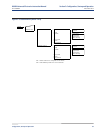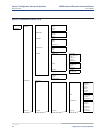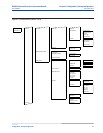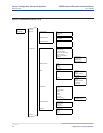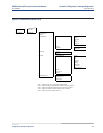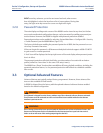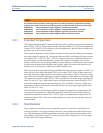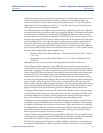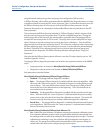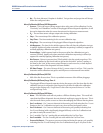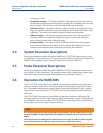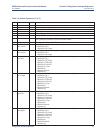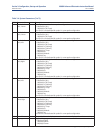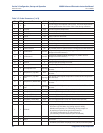
Configuration, Startup and Operation 37
6
888Xi Advanced Electronics Instruction Manual Section 3: Configuration, Startup and Operation
PN 51-6888Xi December 2012
and the cell area becomes increasingly more pressurized. Pressurizing the sensing cell during the
calibration procedure will induce an error in the O
2
reading once the calibration gases are
removed and pressures return to the normal operating duct pressures. The O
2
reading will be
shifted lower by 1.5% of reading (not 1.5% O
2
, or 1.5% of full scale) for every 7 inches of water
column pressure induced during the calibration.
The calibration induced error will be further increased if the calibration gas flow rate is adjusted
to compensate for the reduced flow caused by the plugging diffuser. For example, an instrument
technician may do a calibration on a probe with a badly plugged diffuser. He notices when he
opens the bottle and sets his pressure regulator to 20 PSI that the flow meter is reading 2 SCFH
instead of the normal 5 SCFH. He tries to readjust the flow rate on the flowmeter, but still cannot
get the specified 5 SCFH, so he adjusts the pressure of the pressure regulator upward until he
can get the 5 SCFH flow. This results in doing the calibration with a pressure on the cell, for
example, of 2 PSI (approximately 56 inches of water column). When he removes his calibration
gases, and the probe sensing cell returns to the normal duct pressure of -1 inch of water column,
the probe will be reading low by approximately 0.5% O
2
:
• 56 inches H
2
O pressure during calibration = 12% of reading shift (56 in H
2
O / 7 inH
2
O x
1.5% = 12%)
• If normal process O
2
readings are 4% O2 then 4 x 0.12 = 0.48 % O2 shift downwards
(3.52% O
2
)
Although instruction manuals are clear in warning against this situation, it still occurs.
The new Plugged Diffuser Diagnostic in the 6888Xi electronics operates on the principle of
measuring the "return to process" time during the calibration purge cycle (after the second cali-
bration gas is removed). The return to process time measurement is used to calculate a diffuser
response time (Diff T90) and to generate a warning to the user when the return to process time
has exceeded 75% of the configured purge time. Default purge time is 300 seconds, but it's
important for the user to configure the actual purge time for their process conditions. A purge
time that is too long will prevent a plugged diffuser alarm from triggering until the diffuser plug-
gage is very bad. If the purge time is set too short, and probe has not fully returned to the
process reading after the configured purge time expires, then the process reading will be in error
due to test gas not being fully purged from the sensing cell area. As the diffuser becomes more
plugged, the time to fully purge the sensing cell area of calibration test gas will increase.
The plugged diffuser feature works best with an automatic calibration system, where the probe
electronics knows the exact timing of the solenoid gas switching. The diagnostic will also work
for manual calibrations by detecting milivolt changes at the sensing cell during the stop gas
phase of the calibration, when the second calibration gas has been disconnected.
In addition to providing a warning of possible diffuser pluggage, this feature can also be used to
minimize the usage of calibration test gas and the time to perform a calibration. This capability
is enabled by configuring the Auto Advance Cal parameter. When Auto Advance Cal is enabled,
the plugged diffuser diagnostic will advance an automatic calibration when the readings for test
gasses and the process measurement have become stable. By doing this, the amount of time
that test gasses flow and purge are kept to a minimum.
The rate method is recommended for the plugged diffuser diagnostic. The rate method should
work best for most applications, however if the diagnostic generates warnings with a new probe
and/or diffuser, it may be necessary to switch the detection method to proximity.
By default, the Auto Advance Cal feature is disabled. Enabling Auto Advance Cal minimizes test
gas useage and calibration time. When using the Auto Advance Cal feature, it is recommended



